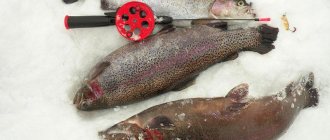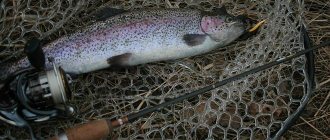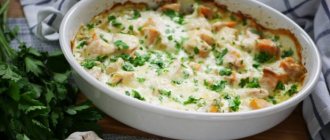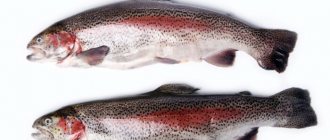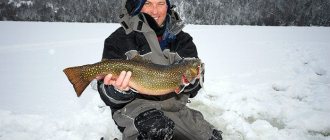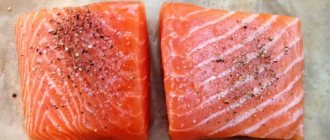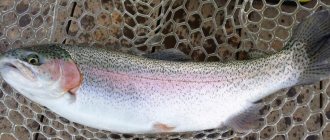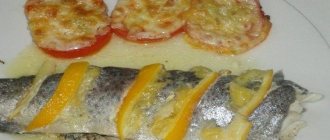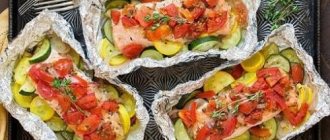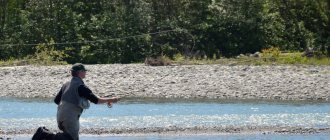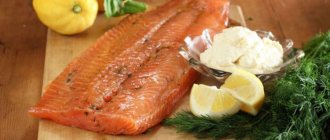Trout fishing is a tradition for many fishermen. Moreover, this activity is a priority even for experienced fishermen. Trout is a fish with character; catching it requires a special approach. And fishing itself is an energetic and entertaining process.
In order to get a great catch, you must know what time and how to catch trout. This fish is best caught in the warm season - spring and summer. During this period, the predator quickly hunts insects located near the reservoir. The trout bite begins in mid-spring and continues until autumn. In September, salmon, which include trout, begin spawning.
When to catch trout
The season for trout fishing depends on the spawning time of the fish. In the 3rd year of life, trout are already ready to spawn. This period begins in early autumn. Spawning usually lasts no longer than a month. As usual, a week after spawning the intensity of the bite increases. In winter, the fish is in a semi-passive state: it feeds rarely and is inactive. With each new trip for trout, you should drill new holes, because the trout have already noticed the old ones. In winter, fish are caught well with bloodworms, maggots and live bait.
Fishing for trout in winter on paid platforms is becoming more and more popular every year
With the onset of spring, the predator rarely leaves its wintering potholes. Found on riffles. In places with moderate currents, trout actively hunt. Food includes young fish, frogs, and caddis flies. In summer, trout rarely appear near the shore during the daytime, because they stay in colder places. It goes hunting at night - the peak of fish activity. To catch trout in the summer, use plug rods. Cast over long distances.
Where do trout live?
Brook trout is found both in the sea and in fresh water bodies.
This type of fish rarely migrates long distances. Brook trout overwinter in spring sources. Leaves wintering areas during floods, lives near waterfalls in summer. Brown trout swim in schools; they stay close to boulders, hiding from the sun's rays. In our country, this species is bred on private fish farms.
This species prefers fresh waters, the temperature of which does not exceed 15 ºС. The fish is passive during the daytime; during the day it hides in snags and the shadows of underwater rocks.
NEWS
Trout season 2020
The start of the trout season in our club is scheduled for Friday, September 11, on this day the first stocking of the Trout-Sturgeon Pond with rainbow trout will take place, and on September 12 and 13, new additions of a fresh batch will take place into the pond to maintain an active bite all day long. The first launch will take place on Friday at 10:00 in the amount of 200 kg, then on Saturday and Sunday there will be additional launches during the day for a total of about 500 kg. We invite all fans to try their hand at catching this strong predatory fish. For interesting fishing, we have prepared professional trout spinning rods for rent, the store has all the necessary baits that trout prefer, an experienced instructor will show you in detail how to use the gear and help you catch your first trophy.
Excellent trout fishing in the Moscow region
In our club, trout fishing is available at an excellent price of 650 rubles/kg. Our trout is of the highest quality, very tasty and nutritious fish. Trout is the most famous trout species in the world and is very popular in paid ponds in the Moscow region.
#Trout
MAIN NEWS
There is no ice yet, but trout and sterlet are actively biting
On November 19, 2021, freezing rain fell in the Moscow region, but despite this it could not cover our ponds with ice.
19.11.2020
Fishing report in November 2020
In November, there are already fewer sunny days and it has become slightly colder, but despite this, active fishing for trout, sturgeon and other fish species continues on our ponds.
15.11.2020
We invite everyone to excellent sterlet fishing
400 kg of sterlet with caviar were released into a trout pond
04.11.2020
Now there are two VIP fishing ponds in Ichthyologist
We stock trout and salmon in the Family Pond to increase additional fishing grounds in the winter.
22.10.2020
We are launching an exclusive: pike perch, ide, bream, pike
The first planned stocking of fish in the main reservoir of our club took place. Predators pike perch and pike went to join the ranks; the fish are beautiful and lively.
13.10.2020
Fishing in October 2020
October greeted us with warm, rainy weather. Therefore, a little rain, a breeze and a slight cold snap can cause the fish to actively bite
09.10.2020
Fishing report - September 2020
September treated us to warmth and excellent fishing with a good catch. In autumn, the behavior of most fish species changes to increased fat gain before wintering.
26.09.2020
We invite you to trout fishing at the fishing club Ichthyologist
Excellent trout fishing from northern Karelia. Weight from 2 to 3 kg. The active biting phase begins in the afternoon.
23.09.2020
Fishing report in September 2020
Fishing for sturgeon is extremely productive; its mooring sites have long been known; the club store has favorite delicacies available as bait for catching sturgeon.
09.16.2020
All news
Trout fishing on paid reservoirs
Not everyone has time for a long trip to a fishing spot. Nowadays, there are many paid reservoirs where you can spend time with pleasure. Fishing with a spinning rod is an entertaining activity in its own way that brings joy to everyone. Feeling active resistance from a lively trout, while demonstrating all your skill and dexterity, is a great pleasure. However, the disadvantage of this fishing is that you have to pay for the pleasure of fishing.
The advantage is a guaranteed catch and no need to travel many miles. Recently, bathhouses have been built on “pay zones”, which are usually located along the shore. In general, the banks are equipped in the best possible way: at the fishing site there is a low bridge on which you can sit. Due to the fact that paid places are visited by a large flow of people, the fish does not change its position, the trout skillfully moves away from the hook. Therefore, having found the right approach, every fisherman can be proud of himself.
It is best to come to the “pay zones” At this time, trout are most active and move throughout the entire reservoir rather than resting in the depths. Trout often lurks in underwater holes; if you find the right place next to one, a double catch is guaranteed.
Video on trout fishing in winter on girders
What to catch trout with
The best natural baits are: maggots, caddis larva, firefly, midges, live bait. Live bait can be a small fish with an elongated body. Commonly used fish species: minnow, trout, gudgeon.
The most effective vegetable baits : pearl barley, bread, corn.
Artificial baits. The following are used as bait:
- Spoons . Use number three spinners with a fast needle. Priority is given to spinners with a golden hue. This bait has the following advantages: applicable at great depths; are reusable; used in different fishing conditions.
- Wobblers . Buy oscillating wobblers from four to ten centimeters long. Advantages: imitate a live fish, attracting the attention of a predator; used at different depths; have a game that copies the movements of living fish.
- Twisters . Use bait no longer than 5 cm. It will be better when the “rubber” is “edible”, because fish often bite the bait, so the “edibility” of the bait plays a big role.
- Artificial worms . It is this bait that is most often used by fishermen on paid sites. The worm needs to be equipped with a jig head. The placement of the bait does not play a special role. Both classic and “weki” are used, when the silicone bait is pierced exactly in the middle. “Wacky” is used when fishing at shallow depths; at greater depths, use the classic one.
- Crustaceans and nymphs . Since this bait sinks slowly, it is used only in the upper layers of water. The wiring should be selected by testing, as well as the color of the bait. Use different weights of sinker heads. Mostly they reach 0.8-0.10g when fishing in the middle layers of water.
- Balancer . Using a balancer is a sure way to increase the bite frequency. Excellent for winter trout fishing. The size of the bait is 5 cm. There is no universal color, so you will have to experiment. Experienced fishermen advise attaching a shiny bead to the balancer. So, the fish will be more willing to take the bait. Using a balancer is not so easy, and the fishing result will depend on your special approach.
- Pasta , they are also boilies. These are spherical baits that attract fish with their smell. Boilies can be dusty, which means that they are sprayed into the water, spreading taste throughout the pond. The fish reacts instantly.
Wobblers for trout
Pasta, boilers
Spinner for trout
In order for the “game” to take on a special shade, use a rod and a nod. The nod should be long, but not harsh . This is necessary so that the movements are not sudden. Throw the balancer 25-30 cm, then lower your hands to the starting position. At this time, the balancer reaches to the bottom, rotating in the form of a figure eight. After the bait is in its original position, pause briefly for a few seconds. The peculiarity of fishing in winter lies in the low dynamics of movements. Frequent movements can leave you without a catch.
Where to fish for trout in the Moscow region?
Trout commercial reservoirs in the Moscow region can be divided into two types, according to the methods of stocking trout. The first type includes reservoirs with seasonal trout stock. The second type includes reservoirs where trout are found year-round. The reason for this division, according to the method of keeping trout, is associated with the sensitivity of this fish to water temperature and oxygen content in the water. Trout does not tolerate elevated water temperatures well. If the water temperature becomes higher than 24 degrees, the trout simply die. Because of this, pond owners prefer to keep trout in the pond only in autumn, winter and spring. It is during this period that, thanks to natural processes, the conditions for keeping fish are most favorable. During these periods of the year, due to wind and rain, natural aeration of water occurs. And all this leads to activation of the fish, forcing the trout to actively feed. A completely different situation is observed in the summer. The water temperature begins to rise rapidly. Due to the growth of phytoplankton, the amount of oxygen in the water decreases. And if, for local fish, this is not so critical, then for trout, such changes lead to catastrophic consequences. The fish begin to die. Moreover, the process of death is developing rapidly. And in a week of heat, all the trout in the reservoir can die. It must be said that the owners of reservoirs do not really try to change the situation with the state of the water, preferring to release trout only seasonally, counting on favorable natural conditions in autumn, winter and spring. Moreover, transporting trout during this period is not a difficult undertaking. And it’s easier to stock trout for the season than to carry out any work to improve the condition of the water. Moreover, this cannot always be done due to the specifics of the reservoir. Trout are bred year-round in reservoirs where normal conditions can be maintained throughout the year. These are reservoirs that have a constant flow of water, built on streams, rivulets, or have their own well from which water flows into the reservoir. If the reservoir is flowing, then it is possible to provide a summer regime for keeping trout. But even in such reservoirs, not everything is simple with the water temperature in summer and compliance with the oxygen regime. Much depends on the intensity of the inflow and the depth in the reservoir itself. Flowing reservoirs, although they have an advantage in terms of all-season trout fishing, over ponds with stagnant water, the number of flowing reservoirs is an order of magnitude smaller. And most commercial trout ponds operate on a seasonal schedule, releasing trout in the fall and winter. And providing paid fishing services only until the water warms. But on paid reservoirs that operate in the mode of seasonal fishing and seasonal stocking, even in winter, the water may not correspond to its normal state and acquires a brown tint. This is due to the fact that the reservoirs are clearly overstocked. Those. No one follows trout launch standards. And the process of water pollution occurs with the waste products of the trout itself. In cold water, the microorganisms that are supposed to process fish feces are unable to do it quickly or efficiently enough. Therefore, substances containing ammonia and having a specific odor begin to accumulate in the water. By releasing trout above the norm, pond owners want to ensure a stable fish bite. But this usually leads to undesirable consequences in the health of the fish. The fish begins to get sick, its immunity is impaired, and the fish may become covered in mucus. And the physical condition of the fish is very far from ideal. The trout does not resist so much when fishing. Much weaker than trout, which lives in reservoirs with normal stocking and normal water conditions. In addition, the culinary qualities for which trout is so famous are lost. Fish meat may have a specific smell and loses its elasticity. Fish should not be frozen, because then, after defrosting, the meat begins to separate from the bones. And the smell can be somewhat removed by using a large number of different spices during cooking. And absolutely nothing remains of the natural taste of trout. Even if a stagnant reservoir is stocked normally, then all the same, after two or three months of living in it, the trout begins to get sick, apparently due to failures in the immune system. And by spring, the percentage of fish susceptible to disease begins to increase. So it turns out that before choosing a reservoir for trout fishing, you need to take into account not only the proximity to the house and a civilized entrance, but also the possibility of eating trout in different forms. Indeed, on most trout ponds, releasing fish back into the pond is prohibited. So, the taste of trout in a pond is quite important. In addition, spinning anglers go trout fishing, primarily for the sensations and adrenaline. And if the trout resists sluggishly, then all the charm of such fishing will tend to zero. So the health and condition of the fish are very important precisely because of the feelings of the fisherman. After all, it is quite obvious that people go to commercial reservoirs, first of all, for the sensations, and not for the fish. And it is precisely this explosion of emotions while fishing for trout on super-delicate tackle that makes this fishing so attractive.
Gear selection
When fishing for trout, spinning is most often used. Spinning fishing is not only interesting, but also very effective.
- Spinning . When choosing a fishing rod, you should take into account the fishing conditions. A long rod will allow you to cast light baits over a long distance; short rods, in turn, will help you avoid awkward casting from under a tree or bush. If you still haven’t found your fishing spot, and don’t know what to expect from the chosen area - thickets or free space, then the best option is a spinning rod not exceeding 2.5 meters in length.
- Fishing line . The choice of fishing line directly affects the sensitivity of the entire tackle. The least stretch of the fishing line allows you to more clearly feel the frequency of vibration of the bait. With a well-chosen fishing line, you can even feel the movements of the petal of a rotating spoon. The diameter of the fishing line should be selected in the range of 0.16-0.18 mm . When using braided fishing line, the diameter can be chosen smaller, because the braided line has great strength.
- Reel _ Only one thing is required from the reel: it must work out the movements of the fish instead of the rod. The reel must be equipped with a reliable clutch. Before you start fishing, adjust the drag so that when the fish jerks, the line comes off the reel freely, at the same time making it easier for the trout to get closer and closer. It is optimal to choose a reel with a gear ratio of approximately 5:1
- Bombarda . If it is not possible to cast over a long distance with a spinning rod, then trout fishing is carried out using a bombard. This tackle is distinguished by the presence of a special float. The purpose of the float is to make the rig heavy. This allows you to cast even the lightest baits over long distances. For clear water, plastic models are used. In addition to artificial baits, bombarda can also be fished with natural baits.
- Donka . If for some reason you do not use a spinning rod, a decent tackle is a donka. A traditional fishing rod allows you to cast edible baits over long distances. To prevent the equipment from being carried away by the current, equip the fishing rod with a heavy sinker.
- Fishing with wiring . The fish responds with lightning speed to food passing by. This feature is used by fans of float fishing with wiring. The most suitable places for this type of fishing are all kinds of pools and riffles. The main bait for this kind of fishing is a worm.
Bait recipe
Many fishermen prepare their own baits because they do not trust the composition of “store-bought” ones.
In the past, avid fishermen loved salmon caviar as bait for trout, but since this product is very expensive, chicken eggs, rich in protein, have come to replace it. Preparing pellets is not difficult. This complementary food may be more expensive than purchased food, but it is often much more useful. Trout bait contains the following components:
- Eggs;
- Milk;
- Compound feed;
- Squid;
- Salted herring;
- canned corn.
Method of preparation : First, make an egg omelet, then the trout feed should be mixed with the omelet. Cleaned seafood is crushed and added to the mixture with the omelette, the corn is passed through a meat grinder, the juice from the jar is poured into the future bait. Everything should be thoroughly mixed and refrigerated.
This mixture is stored for one night, after which it is used.
Tips and secrets
A large number of anglers, who have a lot of experience and secrets in fishing, are switching from traditional fish to more resourceful fish. Therefore, trout is the object of greatest attention among professionals. Trout fishing is a labor-intensive process that is accompanied by high mobility of the fisherman. This happens because trout is a very active fish throughout the year. Trout fish is delicate and demanding. Does not live in waters exceeding 20 degrees.
The fish are concentrated in springs and lakes, where the water is crystal clear. As stated earlier, trout fishing occurs in early spring, immediately after the ice has melted. You can fish using a classic float rod, fly fishing and spinning.
If fishing is done using a float rod, it is necessary to use a powerful rod of as long a length as possible. When you have such a rod, you have the opportunity to make a long cast and get to the “spot” where the trout likes to be.
In addition to the fact that the rod should be strong and long, it should be light in weight with a fairly rigid tip. In this case, you will be able to throw the bait a sufficient distance. Of all the abundance of trout species, river trout is the most common in our country. The most effective bait for it is a red dung worm, or a caddis larva.
The worm should be put in half on the hook, as small trout will not covet too large a bait. Fishing for trout requires the fisherman to have the necessary patience and extreme accuracy: you need to approach the place where the fish are baited without making too much noise, so as not to scare away the wary fish. Making frequent casts is categorically not recommended, because the trout may simply get scared and move to another place.
Fishing for trout in the spring on a retractable leash with rubber:
What you should pay attention to
Sweeping . There is no need to hook the fish with too much force. The force and sharpness of the hook will not give you any advantages. Trout hit the bait hard, so a sharp hook is simply not required. It is used only if you need to tighten the line before fishing. Instead of providing strong tension, hooking will only create slack.
Equipment . The equipment of an angler who wants to try his luck in trout fishing should include:
Sunglasses . They not only reduce the impact of sunlight on the eyes, but also eliminate glare. This will help you see trout in shallow water. These glasses will help the fisherman out during summer and spring fishing.
Landing net . Without it, it is difficult to get even a small trout. A short racket landing net is very inconvenient when fishing on a river, because it is quite difficult to get caught fish into it. If the fishing takes place on “platforms”, then it will do its job perfectly. For fishing in natural bodies of water, use a landing net with a retractable handle; the diameter of the hoop should be at least 50 cm. With this landing net it is not difficult to catch medium-sized trout. No tail, no scales!
Rules for trout fishing and tariffs on the paid site
"Tariff - 10 kg." — The most popular rate for trout fishing on the third pond. The cost of the license is 3500 rubles. from 1 person. You can safely catch 10 kg of trout (they are included in the license price). Caught fish over the norm of 10 kg is weighed and paid additionally in accordance with the price list.
“Family tariff” - This tariff is ideal for family fishing. As a rule, a husband and wife fish, and the license includes 15 kg of trout caught. The cost of a license for two people is 4,500 rubles. Fish caught in excess of the tariff (more than 15 kg) is paid separately.
“Catch and release” - TEMPORARILY CLOSED TARIFF This tariff is intended exclusively for trout fishermen and includes special conditions for fishing, gear and landing fish. The license price is 1500 rubles per person for the whole day. The main rules of sport fishing are that the fish was minimally injured and was able to live after being released.
1. Fishing only with a spinning rod with a trout spoon or rubber.
2. When fishing, only “barbless” hooks (without a sting) are used.
3. When fishing, use only a silicone landing net.
4. It is forbidden to place the landing net with fish on the ground.
5. It is forbidden to bring fish into a net by air.
6. It is forbidden to touch the fish with your hands (only using special gloves).1. Mandatory use of barbless hooks.
“Trout fishing competitions” - On the third pond of the paid reservoir in Lepsari, trout fishing competitions are often held. The fishing conditions and prize fund for the winners are always different, but very good. You will see details and photographs of the competitions held in the section: Trout fishing competitions
